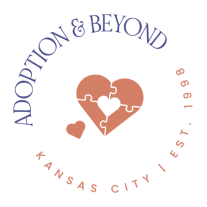Imagine embarking on a journey where the destination is not just a physical place but a profound sense of self. Adopting a child is like setting sail on a vast ocean, with the potential to discover a treasure trove of identity.
But how can you ensure that this precious identity is preserved and nurtured? In this discussion, we will explore four best practices that will guide you in unlocking the secrets to identity preservation in adoptions.
Brace yourself for a voyage filled with open communication, cultural immersion, biological connections, and unwavering support.
Are you ready to embark on this transformative journey?
Building a Strong Foundation of Open Communication
To build a strong foundation of open communication in adoption, it’s crucial to establish trust and create a safe space for all parties involved to express their thoughts and emotions freely. Effective communication techniques ensure everyone feels heard and understood throughout the adoption process.
Creating a safe and non-judgmental environment is essential for encouraging open communication. It’s important to foster an atmosphere where all individuals involved, including birth parents, adoptive parents, and the child, feel comfortable sharing their thoughts and emotions without fear of criticism or rejection. This can be achieved by actively listening, showing empathy, and validating each other’s experiences.
One effective communication technique is active listening. This involves giving your full attention to the speaker, maintaining eye contact, and providing verbal and non-verbal cues to show that you’re engaged in the conversation. By actively listening, you demonstrate respect and create a safe space for others to express themselves.
Another important technique is expressing thoughts and emotions using ‘I’ statements. This helps to avoid blaming or accusing others, which can lead to defensiveness and hinder open communication. By using ‘I’ statements, you take ownership of your feelings and allow the other person to understand your perspective without feeling attacked.
Creating a safe and non-judgmental environment also involves being mindful of your body language and tone of voice. Non-verbal cues, such as nodding, smiling, and maintaining an open posture, can convey acceptance and encourage others to open up. Similarly, using a gentle and non-threatening tone of voice helps to create a calm and welcoming atmosphere.
Embracing and Incorporating Birth Culture
Embracing and incorporating birth culture is an essential aspect of creating a sense of identity and belonging for adoptees. By fostering cultural education and language immersion, you can help adoptees develop a strong connection to their roots and feel a sense of pride in their heritage.
Here are four ways you can embrace and incorporate birth culture into an adoptee’s life:
- Cultural Education: Provide opportunities for adoptees to learn about their birth culture through books, movies, and cultural events. Encourage them to explore their heritage by visiting museums, attending cultural festivals, or connecting with other individuals from their birth culture. This will help them better understand their background and foster a sense of belonging.
- Language Immersion: If the adoptee’s birth culture has a different language, consider incorporating language immersion into their education. This can be done through language classes, language exchange programs, or hiring a language tutor. Learning the language will enhance their cultural knowledge and provide them with a valuable skill that can open doors to future opportunities.
- Celebrating Traditions: Incorporate traditions and celebrations from the adoptee’s birth culture into your family’s routine. Celebrating holidays, preparing traditional meals, or participating in cultural rituals can help adoptees connect to their heritage and create lasting memories.
Honoring and Maintaining Biological Connections
Maintaining a connection with your biological roots is crucial for adoptees to develop a well-rounded sense of identity and a deeper understanding of your personal history. Honoring and maintaining biological connections means acknowledging the importance of your genetic heritage and the potential sibling relationships that may exist beyond your adoptive family.
Sibling relationships play a significant role in shaping our lives. For adoptees, discovering and maintaining connections with biological siblings can provide a sense of belonging and connection to their roots. These relationships can offer a unique support system and a deeper understanding of their genetic heritage. Whether through letters, phone calls, or in-person visits, maintaining contact with biological siblings can help foster a sense of identity and provide a valuable source of emotional support.
Additionally, understanding and honoring your genetic heritage is vital for adoptees. Exploring your family’s background, cultural traditions, and medical history can provide valuable insights into your identity and well-being. Knowing your genetic predispositions can help you make informed decisions about your health and take proactive steps toward preventive care.
When honoring and maintaining biological connections, it’s crucial to approach the process with sensitivity and respect. It’s important to understand that not all biological connections may be accessible or willing to establish contact. Respect their boundaries and acknowledge that everyone’s journey is different. Embrace the available connections and nurture those relationships with care and understanding.
Providing Support and Resources for Identity Exploration
Discovering and exploring your unique identity is a lifelong journey, and having support and resources along the way can greatly enhance your experience. When it comes to identity exploration in adoption, there are several key ways in which support and resources can be beneficial:
- Support Groups: Connecting with similar experiences can provide a sense of belonging and understanding. Support groups specifically for adoptees can offer a safe space to share stories, experiences, and challenges. It’s a place to receive guidance and support from others who’ve walked a similar path.
- Therapy and Counseling: Seeking professional help from therapists or counselors specializing in adoption can be invaluable. They can provide a safe and confidential space to explore complex emotions, navigate identity issues, and develop coping strategies for any challenges that may arise during the identity exploration process.
- Educational Resources: Learning about your ancestral heritage can be a powerful tool in understanding and embracing your identity. Books, documentaries, and online resources focusing on adoption and ancestral heritage can provide valuable insights, historical context, and a sense of connection to your roots.
- Creative Outlets: Engaging in creative activities such as writing, art, or music can be a cathartic way to express and explore your identity. Journaling, for example, can help you process your thoughts and emotions. Art or music can also be powerful outlets for self-expression and reflection.
Wrap-Up
Build open communication, embrace birth culture, honor connections, and support identity exploration for a strong foundation in a child’s self-discovery.
Just as a flower needs nurturing and care to thrive, so does a child’s identity.
Let’s cultivate an environment where every adopted child can flourish and bloom in their unique identity.

